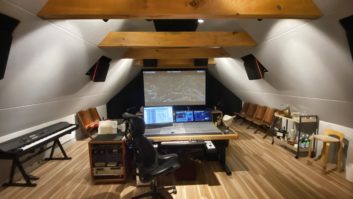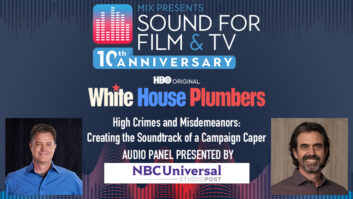
On November 4th, the FCC plans to change the rules that govern the use of wireless microphones and other wireless audio equipment. The new rules may make it impossible for you to continue using wireless microphones as you do today, and your entire inventory of wireless equipment may become obsolete within months.
The current deadline to send comments to the FCC on this issue is Monday, October 27th. It is critical that you act immediately to tell the FCC and your legislators that these changes are unacceptable to you.
Background
The FCC is reorganizing the UHF television band, coinciding with the transition from analog to digital television broadcasting. Soon, TV stations will occupy a smaller section of the UHF spectrum because digital stations can be spaced more closely together – even on adjacent channels – without interfering with each other. There will still be unoccupied channels in every market – referred to as “White Spaces” – just as there are now.
Why does this matter to you? These “White Spaces” are used by wireless microphones and instrument systems, in-ear monitors, and production intercom systems. Beginning on February 18, 2009, the FCC plans to allow consumer wireless devices – mobile phones, BlackBerry™’s, etc. – to access the internet using the same frequencies currently used by wireless audio equipment.
These devices can cause catastrophic interference if operated on the same frequency as wireless audio devices. The effect on a wireless microphone could be decreased range (perhaps to as little as 10 feet), an increase in the number and severity of audio dropouts, or even complete interruption of the signal. Tests have also proven that White Space devices can interfere with DTV reception and even cable TV signals.
Two Channels Are Not Enough
Shure has proposed that the FCC set aside eight ‘protected’ TV channels (2 in the VHF band and 6 in the UHF band) in each market, in which unlicensed wireless microphones could operate without interference from White Space devices. The devices would check an online database and avoid transmitting on the channels that are ‘protected’. The problem: the FCC plans to set aside only TWO TV channels for unlicensed wireless mics – and they won’t reveal where they are in the spectrum. Two TV channels (12 MHz of spectrum) would only be enough for four to ten wireless microphones – less if other wireless mic users are nearby. This is insufficient for many users.
Tests Say “No”, But The FCC Says “Go”
For wireless microphones operating outside of the two ‘protected’ channels, the FCC proposes to use a technology known as “spectrum sensing.” This would require White Space devices to detect DTV stations and wireless audio equipment and avoid transmitting on the frequencies that they are using. The FCC’s own tests have demonstrated that this technology often fails to detect that a wireless microphone is present, even at very short distances. The problem: the FCC plans to allow new devices that rely on spectrum sensing anyway.
No Clear Plan For Large-Scale Users
In situations where many wireless audio devices are in use, several open TV channels may be required. The FCC has proposed that users would need to register in an online database that would include the event location and duration. The problem: the FCC has not revealed who would have access to this database. Many types of wireless users could be locked out.
The FCC Needs to Hear From You
The FCC needs to hear from wireless users, installers, and resellers that sufficient protection for wireless microphones is essential. Contact the FCC and your Congressional representatives directly, using one of the links below. Tell them how important wireless audio equipment is to your organization’s activities. If you are a performer or producer, tell them how it will affect your performance or content. If you are an installer or reseller, tell them how this will impact your business.
NARAS: The National Academy of Recording Arts and Sciences. Click here to go to the NARAS Advocacy page, which allows you to find your U.S. Representatives and Senators by entering your zip code.
NAMM: The National Association of Music Merchants. Click here to send a letter to the FCC specifically stating the interests of the music equipment industry.
INFOCOMM: The Audiovisual (AV) Association. To express your support for Infocomm’s letter to the FCC representing the interests of AV equipment dealers and installers, go to www.infocomm.org.
Shure Incorporated:Click here for instructions on how to file a comment with the FCC, and a direct link to the FCC’s Electronic Comment Filing System.
[Statement courtesy of Shure, Inc.]







